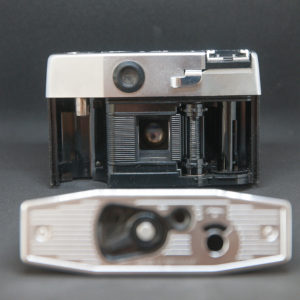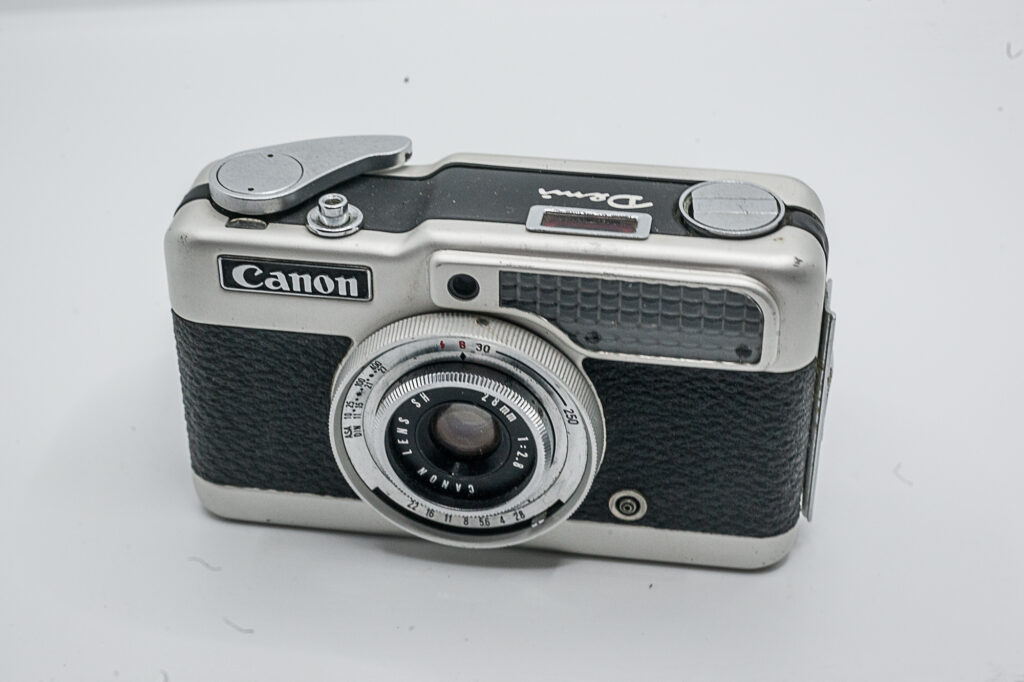snap shot, Tips & Tricks
Reviving the Half-Frame 35mm Camera: A Modern Nod to Tradition
In the ever-evolving landscape of photography, the charm of vintage formats occasionally resurfaces, beckoning us to revisit the past while embracing the present. One such format is the half-frame 35mm camera—a compact yet powerful tool that once dominated the scene but has since taken a backseat to digital counterparts. However, amidst the sea of digital devices, the concept of reviving this classic format has gained newfound relevance, especially in light of the ubiquitous standing format of modern smartphones and tablets.
The Legacy of Half-Frame 35mm Cameras:
Half-frame 35mm cameras, popularized in the mid-20th century, were revered for their compact size and cost-effectiveness.

This idea of cost is now also relevant as the prices of films go through the roof. Instead of capturing the standard 36 exposures on a roll of film, these cameras doubled the capacity by exposing two images per frame, resulting in 72 shots. This allowed photographers to document more moments without the hassle of frequently changing rolls.
Examples from the Past:
- Agfa Paramat Series: Known for their simplicity and reliability, Agfa Paramat cameras were beloved by amateurs and enthusiasts alike. Their sleek design and user-friendly features epitomized the accessibility of half-frame photography.
- Olympus Pen Series: Perhaps the most iconic of all half-frame cameras, the Olympus Pen series set the standard for innovation and quality. From the original Pen F to the Pen EE models, Olympus combined precision optics with compact design, earning a loyal following among photographers.
- Canon Demi Series: Canon’s foray into half-frame photography yielded the Demi series, featuring cameras like the Demi S and Demi C. These cameras boasted excellent optics and robust construction, making them reliable companions for capturing everyday moments.
Moreover, the smaller frame size lent itself to creative compositions, encouraging experimentation and spontaneity. From street photography to photojournalism, the half-frame format offered a unique perspective that distinguished itself from its full-frame counterparts.
The Rise of Digital Dominance:
With the advent of digital photography, film cameras, including half-frame models, faced a decline in popularity. The convenience of instant previews, virtually unlimited storage, and easy sharing facilitated by digital devices overshadowed the tactile experience of film photography. As a result, many half-frame cameras found themselves relegated to the realms of nostalgia, cherished by collectors but overlooked by mainstream photographers.
A Case for Revival:
Designing a new film camera in the half-frame format in an era dominated by rectangular screens holds promise. Consider the prevalence of smartphones and tablets, which predominantly utilize a vertical orientation for both photography and viewing. By aligning with this standing format, a modern half-frame camera could seamlessly integrate into the digital ecosystem while offering a refreshing departure from the norm.
Pentax’s Foray into Half-Frame:
Interestingly, Pentax, a renowned name in the world of photography, is reportedly looking into the possibility of developing a new half-frame 35mm camera. This move signals a potential resurgence of interest in the format and underscores its relevance in today’s digital age. Pentax’s expertise in crafting quality cameras combined with the allure of the half-frame format could reignite enthusiasm among photographers seeking a blend of tradition and innovation.
Embracing Analog in a Digital World:
The resurgence of interest in analogue photography underscores a growing appreciation for tangible experiences in an increasingly digital world. Film enthusiasts relish the tactile sensation of winding a film advance lever, the anticipation of waiting for prints to develop, and the imperfections that imbue each image with character.
A new half-frame 35mm camera could cater to this demographic while appealing to a broader audience seeking a balance between digital convenience and analogue charm. Its compact form factor would make it ideal for travel and street photography, encouraging users to slow down, observe their surroundings, and capture moments with intention.
Challenges and Opportunities:
Of course, designing and manufacturing a new film camera comes with its challenges. Sourcing materials, ensuring precision engineering, and establishing a viable market are just a few hurdles to overcome. However, the growing interest in film photography, coupled with advancements in manufacturing technology, presents opportunities for innovation and collaboration within the industry.
Moreover, the nostalgia factor associated with half-frame cameras could serve as a marketing advantage, evoking sentimentality and curiosity among both seasoned photographers and newcomers alike.
Conclusion:
The idea of designing a new film camera in the half-frame 35mm format represents a fusion of tradition and modernity—an homage to the past with an eye toward the future. By embracing the standing format synonymous with digital devices, such a camera could bridge the gap between analogue and digital photography, inviting enthusiasts to rediscover the joy of film in a contemporary context.
As the saying goes, “Everything old is new again.” In an age where innovation often revolves around the latest digital technology, perhaps there’s room for a revival of the classics—a nod to where we’ve been and a reminder of the enduring beauty of analogue photography, with Pentax potentially leading the charge into this exciting territory.

